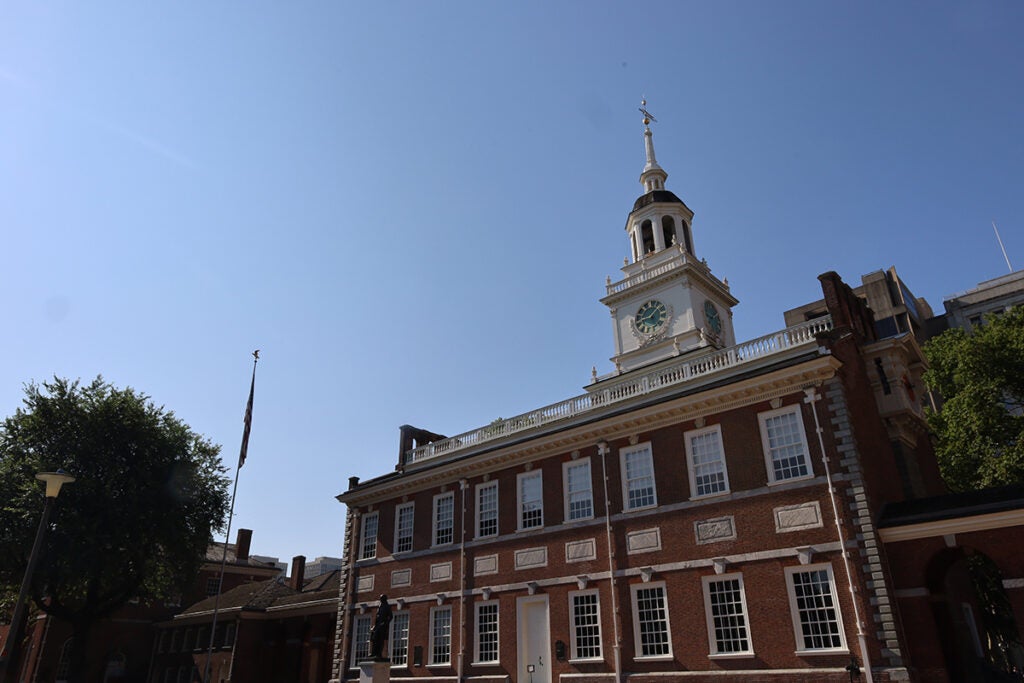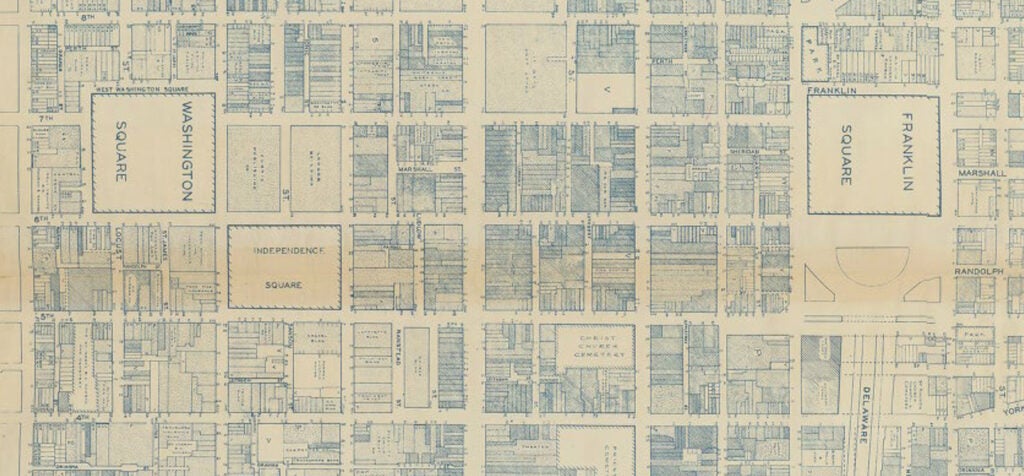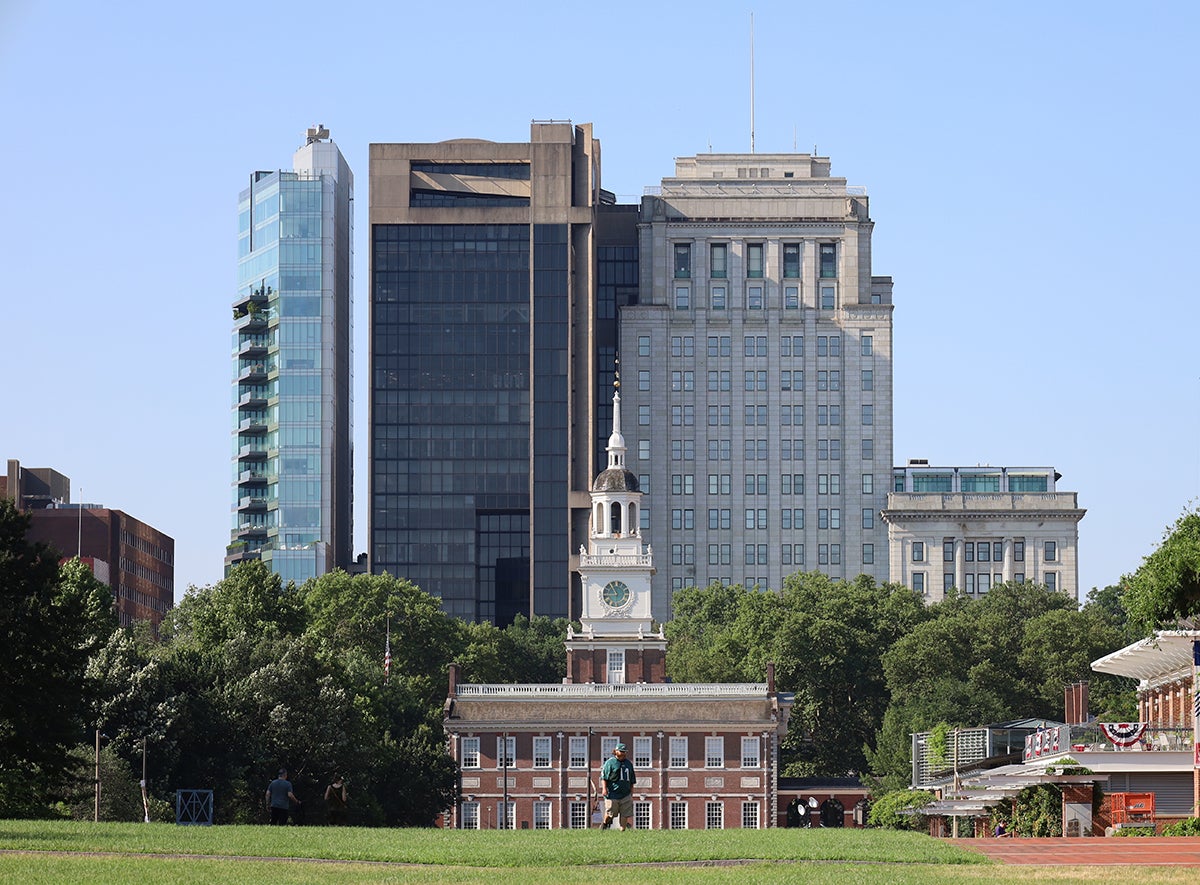They’re just buildings
 Independence Hall, the sight of many important moments in early-American history, on July 4th, 2025. (Nate Harrington/WHYY)
Independence Hall, the sight of many important moments in early-American history, on July 4th, 2025. (Nate Harrington/WHYY)
However, the historical significance of Philadelphia’s Old City didn’t immediately resonate with citizens.
“It was still being used for other stuff by the Philadelphia government,” Hopely said. “It doesn’t take on a purely historical role until the 20th century.”
Many of the early-colonial monuments considered historically rich and worth preserving today were demolished to make way for structures such as the Jayne Building, an eight-story skyscraper that was one of the tallest at the time of its construction, and the Drexel Building, which was built where the Library Company of Philadelphia’s original location was.
How Independence National Historical Park came to be
More than a century and half after the signing of the Declaration of Independence, the building that hosted this revolutionary moment was being overshadowed by the grandeur and stature of the newer buildings.
After World War II, there was a resurgence in interest in the American Revolution, Hopley said. It was then that Congress authorized the establishment of Independence National Historical Park. The city bought up existing buildings or the lots, most notably the site of Benjamin Franklin’s home. The history fever was also spurred by the nation’s upcoming bicentennial.
There were some, such as Judge Edwin Lewis, who wanted a full return to colonial-era Philadelphia by demolishing three city blocks. Others, such as architect Charles Peterson, wanted to highlight the colonial history while keeping portions of the newer construction.
The problem was new buildings “were crowding out these historic sites that had, you know, potential to enliven tourism and link in with the bicentennial, which was coming,” Ammon said. “So, it was perceived that they needed to go.”
By 1969, 143 buildings — mostly “commercial and industrial buildings,” according to Ammon — were demolished to make way for the park’s mall and new construction, which included a pavilion that held the Liberty Bell.
 The three city blocks to the right of Independence Mall show buildings crowding the area. Just under two decades later, most of these buildings would be demolished to make way for the Mall. (Map Collection, Free Library of Philadelphia)
The three city blocks to the right of Independence Mall show buildings crowding the area. Just under two decades later, most of these buildings would be demolished to make way for the Mall. (Map Collection, Free Library of Philadelphia)
“What we lost was a more accurate, material representation of how this city actually developed,” Ammon said. “If we hadn’t torn down all those buildings, there would be structures and sites to help us tell more stories about the history of Philadelphia.”
Her project, Preserving Society Hill, looks at some of the area’s razed buildings, including the Jayne Building and Drexel Building, the latter was replaced by a reconstruction of the Library Company of Philadelphia building.
Ammon said she understood the reasoning behind the demolition.
“I do think it was natural and understandable and made sense to try to think of a way of recognizing these histories a little more,” she said.
But, she thought a “more thoughtful and selective approach might have balanced some of the gains and losses versus a large-scale clearance approach.”
“Right now, it’s very easy to tell one story,” Ammon said.
